General of the Munster Army
In October 1641 Phelim O'Neill launched the Irish Rebellion from the northern province of Ulster. When Barry visited Ireland in 1640 to recruit for the Spanish Army, his endeavour was interrupted by the arrival of the rebellion in Southern Ireland. Barry sided with his fellow Catholics.
In January 1642 Barry and Maurice Roche, 8th Viscount Fermoy besieged Richard Boyle, 1st Earl of Cork in Youghal. On 2 March 1642 Donough MacCarty, the 2nd Viscount Muskerry joined the rebellion [lower-alpha 1] To resolve the rivalry between Muskerry and Fermoy, Barry was chosen as General of the insurgents' Munster army.
In March 1642 Barry, Muskerry besieged William St Leger, the President of Munster, in Cork but weas driven off by Murrough O'Brien, 6th Baron Inchiquin, on 13 April.
Barry then besieged King John's Castle in Limerick for the insurgents and took it through skillful use of the siege techniques he had learnt in Flanders—in particular undermining of the castle's walls (see Siege of Limerick 1642). The castle surrendered in June 1642. He then used the artilry captured at King John's Castle to capture other castles in County Limerick. He then tried to invade County Cork again but was driven off in disorder at the Battle of Liscarroll on 3 September 1642 by Inchiquin with a numerically much inferior force.
When the insurgents organised themselves as the Irish Catholic Confederates in October 1642, Barry was confirmed as commander of the Munster army by the general assembly.
In 1643 Barry prepared to besiege the town of Cappoquin in County Waterford, held by Inchiquin. When Ormond came south from Dublin and besieged New Ross in March 1643, Barry tried to relieve it with the Munster army, but Thomas Preston with the Leinster army got there first. Preston relieved the town but was beaten by Ormond at the Battle of New Ross on 18 March 1643. The war in southern Ireland was stopped by the Cessation signed on 15 September 1643. [32]
Barry seems to have kept the position until his death in early March 1646 at Limerick [33] [34] but took little further part in the war.
| Timeline |
|---|
| Age | Date | Event |
|---|
| 0 | 1580, estimate | Born, probably at Rincurran, County Cork [1] |
| 20–21 | 1601, 23 Sep | The Spanish landed at Kinsale |
| 21–22 | 1602, Mar | Left Ireland with his parents and his three brothers [2] |
| 22–23 | 1603, 24 Mar | Accession of King James I, succeeding Queen Elizabeth I [36] |
| 44–45 | 1625, 27 Mar | Accession of King Charles I, succeeding King James I [37] |
| 51–52 | 1632, 12 Jan | Thomas Wentworth, later Earl of Stafford, appointed Lord Deputy of Ireland [38] |
| 51–52 | 1632 | Retired from active service for Spain |
| 60–61 | 1641, 23 Oct | Outbreak of the Irish Rebellion |
| 61–62 | 1642, 23 Jun | Captured Limerick Castle |
| 62–63 | 1643, 15 Sep | Cessation (truce) between the Confederates and the government [32] |
| 62–63 | 1643, Nov | James Butler, 1st Marquess of Ormond appointed Lord Lieutenant of Ireland |
| 64–65 | 1645, 21 Oct | Giovanni Battista Rinuccini, the papal nuncio, landed in Ireland. |
| 65–66 | 1646, Mar | Died in Limerick [33] |
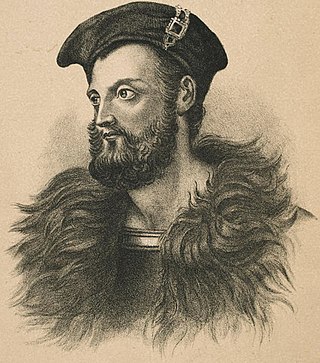
Owen Roe O'Neill was a Gaelic Irish soldier and one of the most famous of the O'Neill dynasty of Ulster. O'Neill left Ireland at a young age and spent most of his life as a mercenary in the Spanish Army serving against the Dutch in Flanders during the Eighty Years' War. After the Irish Rebellion of 1641, O'Neill returned and took command of the Irish Confederate Ulster Army. He is known for his victory at the Battle of Benburb in 1646.
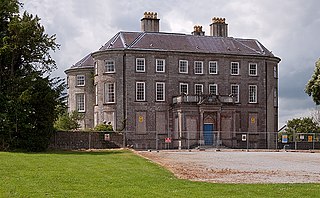
Sir William St LegerPC (Ire) (1586–1642) was an Anglo-Irish landowner, administrator and soldier, who began his military career in the Eighty Years' War against Habsburg Spain. He settled in Ireland in 1624, where he was MP for County Cork in two Irish parliaments and Lord President of Munster. During the Irish Rebellion of 1641, he played a leading part in suppressing the rising in Munster before dying in 1642.

The Irish Confederate Wars, also called the Eleven Years' War, took place in Ireland between 1641 and 1653. It was the Irish theatre of the Wars of the Three Kingdoms, a series of civil wars in the kingdoms of Ireland, England and Scotland – all ruled by Charles I. The conflict had political, religious and ethnic aspects and was fought over governance, land ownership, religious freedom and religious discrimination. The main issues were whether Irish Catholics or British Protestants held most political power and owned most of the land, and whether Ireland would be a self-governing kingdom under Charles I or subordinate to the parliament in England. It was the most destructive conflict in Irish history and caused 200,000–600,000 deaths from fighting as well as war-related famine and disease.

Sir Phelim Roe O'Neill of Kinard was an Irish politician and soldier who started the Irish rebellion in Ulster on 23 October 1641. He joined the Irish Catholic Confederation in 1642 and fought in the Wars of the Three Kingdoms under his cousin, Owen Roe O'Neill, in the Confederate Ulster Army. After the Cromwellian conquest of Ireland O’Neill went into hiding but was captured, tried and executed in 1653.

The Irish Rebellion of 1641 was an uprising by Catholics in Ireland, whose demands included an end to anti-Catholic discrimination, greater Irish self-governance, and return of confiscated Catholic lands. Its timing was partially driven by the dispute between Charles I and his opponents—the English Parliamentarians and Scottish Covenanters—which the rebels feared would lead to an invasion and further anti-Catholic measures. Beginning as an attempted coup d'état by Catholic gentry and military officers, it developed into a widespread rebellion and ethnic conflict with English and Scottish Protestant settlers. It led to the 1641–1653 Irish Confederate Wars, part of the Wars of the Three Kingdoms, with up to 20% of the Irish population becoming casualties.
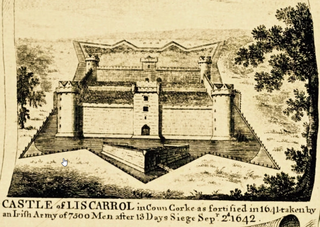
The Battle of Liscarroll was fought on 3 September 1642 in northern County Cork, Munster, between Irish Confederate and Royalist troops. The battle was part of the Irish Confederate Wars, which had started in the north in 1641 reaching Munster in 1642. The Confederates, about 8,500 strong, were led by Garret Barry, an Irish veteran from the Spanish Army of Flanders. The Royalist forces, about 2,400 strong, were commanded by Murrough O'Brien, 6th Baron of Inchiquin, an Irish Protestant. Despite his numerical disadvantage Inchiquin routed his enemies by the strength of his cavalry and the firepower of his musketeers.
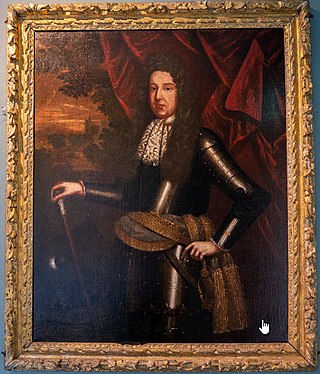
Sir Donough MacCarty, 1st Earl of Clancarty (1594–1665), was an Irish soldier and politician. He succeeded his father as 2nd Viscount Muskerry in 1641. He rebelled against the government and joined the Irish Catholic Confederation, demanding religious freedom as a Catholic and defending the rights of the Gaelic nobility. Later, he supported the King against his Parliamentarian enemies during the Cromwellian conquest of Ireland.
Elizabeth Dowdall ; c. 1600 – after 1642) was a member of the Irish gentry, famed for having defended Kilfinny Castle, County Limerick, against the insurgents during the Irish Rebellion of 1641.
Sir George Hamilton, 1st Baronet of Donalong and Nenagh, was born in Scotland, but inherited land in Ireland. Despite being Catholic, he served his Protestant brother-in-law, the 1st Duke of Ormond, lord lieutenant of Ireland, in diplomatic missions during the Confederate Wars and as receiver-general of the royalists. He also defended Nenagh Castle against the Parliamentarians during the Cromwellian conquest of Ireland. Hamilton was father of Anthony, author of the Mémoires du Comte de Grammont, of Richard, Jacobite general, and of Elizabeth, "la belle Hamilton".

The city of Limerick was besieged five times during the 17th century. Two of these sieges took place during the Eleven Years' War. The first of these sieges occurred during the spring of 1642 when Irish Confederate troops besieged and took the town's citadel, King John's Castle from an English Protestant garrison.
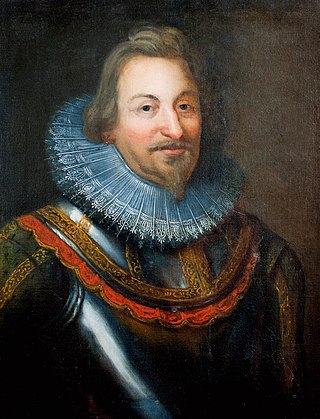
Donogh O'Brien, 4th Earl of Thomond and Baron Ibrickan, PC (Ire), was a Protestant Irish nobleman and soldier. He fought for Queen Elizabeth during Tyrone's Rebellion and participated in the Siege of Kinsale. He obtained the transfer of County Clare, where most of his lands lay, from the Province of Connacht to that of Munster. He was made president of Munster in 1605.
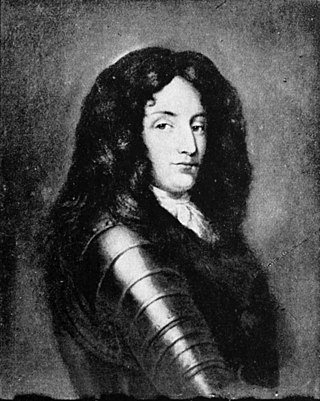
Sir Daniel O'Brien, 1st Viscount Clare also called Donal was an Irish politician and soldier. He was born a younger son of Connor O'Brien, 3rd Earl of Thomond. He fought against the insurgents at Tyrone's Rebellion, but for the insurgents in the Irish Rebellion of 1641 and the Irish Confederate Wars. He resisted the Cromwellian conquest of Ireland. He joined Charles II of England in exile and was in his eighties made a viscount at the Restoration.
Richard Butler of Kilcash (1615–1701) was an Irish soldier and landowner, the third son of Thomas Butler, Viscount Thurles and brother of James, 1st Duke of Ormonde. He sided with the Irish Confederacy at the Irish Rebellion of 1641. He scouted the enemy on the morning of the Battle of Cloughleagh. His descendants succeeded to the earldom of Ormond when the senior branch of the family failed in 1758.
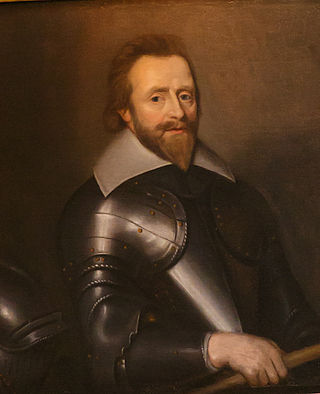
Sir Charles Coote, 1st Baronet (1581–1642), of Castle Cuffe in Queen's County, was an English soldier, administrator and landowner who lived in Ireland. He fought in the Siege of Kinsale (1601–1602) in the Nine Years' War and led the decisive cavalry charge at the Battle of Kilrush(1642) of the Irish Confederate Wars.
Charles Moore, 2nd Viscount Moore of Drogheda (1603-1643) was an Irish aristocrat noted for his leadership of Irish Royalist forces in northern Leinster during the early stages of the Irish Confederate Wars.
Maurice Roche, 8th Viscount Fermoy (1597–1670) was an magnate and soldier in southern Ireland, and a politician of the Irish Catholic Confederation. He joined the rebels in the Irish Rebellion of 1641 in January 1642, early for Munster, by besieging Richard Boyle, 1st Earl of Cork, a Protestant, in Youghal. He fought for the Confederates in the Irish Confederate Wars and sat on three of their Supreme Councils. He fought against the Parliamentarians in the Cromwellian conquest of Ireland and was excluded from pardon at the surrender in 1652. At the restoration of the monarchy in 1660 he recovered his title but not his lands.
Sir George Oughtred Courtenay, 1st Baronet, of Newcastle was an Irish landowner and soldier. He defended Limerick at the siege of 1642 during the Irish Rebellion of 1641.
Redmond Roche was an Irish politician who sat for County Cork in the Parliament of 1640–1649. He was a Protestant during his earlier life but joined the Confederateses in 1642.
Lieutenant-General Patrick Purcell of Croagh was an Irish soldier. In his youth he fought in Germany during the Thirty Years' War. Back in Ireland he joined the Irish Rebellion of 1641 in 1642 when it reached Munster. He commanded units of the Confederate Munster Army, or precursors and successors of it, from 1642 to 1651 under their successive commanders-in-chief, Viscount Mountgarret, General Garret Barry, Viscount Muskerry, the Earl of Castlehaven, the Marquess of Ormond, and finally Hugh Dubh O'Neill. In 1651 at the surrender of Limerick to the Parliamentarians, he was excepted from pardon and executed by Henry Ireton.
Sir Charles Vavasour, 1st Baronet, of Killingthorpe was an English soldier who fought the insurgents in the Irish Rebellion of 1641 where he excelled at the Battle of Liscarroll in 1642 but was defeated in the Battle of Cloughleagh of the ensuing Irish Confederate Wars. After the cease-fire of September 1643 he was sent to England to fight the Parliamentarians in the First English Civil War, but his regiment mutinied and he resigned his commission, dying soon after in Oxford.











